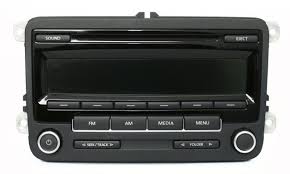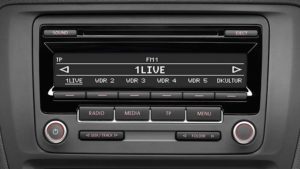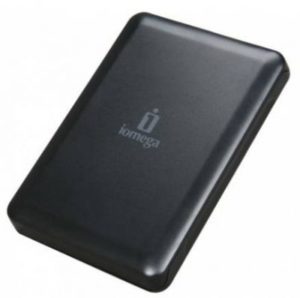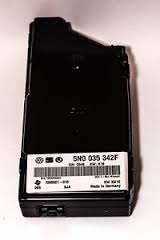For music in the car, some folks tether their iPod or phone to the auxiliary jack, but that is a poor choice as it means touching a handheld device while driving.
Over the last 10 or 12 years, car manufacturers have seen the need for MP3 audio integrations through the factory car stereos. The car stereos are much more capable than ever.
Early attempts at MP3 integrations were weak, and had very specific USB hardware support, resulting in stuttering audio or USB device restarts, playing music from the beginning, starting at track 1 again. Vehicle restarts would start at track 1….AGAIN! Random, being not really all that random. These quirks are really frustrating and somewhat distracting for the driver.
Over time, the various consumer electronics manufacturers brought us Apple iPhones, Tablets and the venerable iPod. Google delivered Android Phones and Tablets. People wanted a way of using these devices in their vehicles -Easily!
Car manufacturers are wary of evolving standards of consumer electronics, and who can blame them. Consumers are fickle, and sometimes completely change directions for the electronics they use daily. Palm, Blackberry, Windows CE, were a few names that people fell out of love with. To make matters worse for the vehicle manufacturers, all of the devices seem to interface in a different way. Across those platforms, some use a proprietary connector, some use a standard USB cable, while others use USB-C and yet others use bluetooth.
In order to have an extensible system that could support these emerging consumer technologies, Volkswagen has used the MDI. (Multi-Device Interface). This is a black-box system that converts your media device to interface with the car stereo, without re-inventing the entire car stereo when the market shifts. Support for a new platform can just be programmed in and a new program installed into the MDI box. A new cable with the fancy new plug for your device may be required to connect to the MDI.
In my car, a 2013 VW Golf Trendline. That’s VW’s moniker for “the cheap one”. I like the cheap one, since in Canada the Comfortline and Highline models were 5-door models, versus the Trendline was the 3-door model. I perceive the 3-door as a little more sporty. On the Trendline, the RCD-310 8-speaker system was offered as the factory stereo. It is a solid performer that performs quite well. What is unfortunate is the lack of integrated Bluetooth. For this, I use a portable visor mounted unit, since to retrofit a factory Bluetooth unit is complicated and expensive due to the lack to steering wheel controls on the Trendline. The Trendline also did not feature the MDI, but I retrofitted that option in since I spend up to 10 hours a week in the car. Gotta have lots of tunes!
The MDI must be enabled within the cars computer. If you have VCDS or a friend with VCDS you can do so. If you don’t have access to VCDS, then this needs to be enabled by the dealer. Groan!

As the Golf is a world car, Volkswagen has different radios based on region, since the radio frequencies and technologies are different. You can see the difference based on region visually. The four “Hard” button controls on the Canadian (North American?) model is listed as FM, AM, MEDIA, & MENU. The European version has RADIIO, MEDIA, TP, & MENU.

Of course my observations are based on a Canadian (Delphi) RCD-310. I presume the MDI /Media functionality to be the same.
The MDI box is not a perfect solution and has it’s share of quirks, but seems to work fairly well it you tame it. There are a number of different connectors available for the MDI. There is a classic IPOD plug, a USB female connector (like on a PC), and a LIGHTNING connctor for your iPhone.

In my use case for the MDI, I use the USB cable input. This allows me to use my phone independently as a phone and/or a GPS. Since my phone is not part of this system, I could install a USB stick full of mp3 music and use that as an input source.As you are likely aware, USB sticks can range in size commonly from 1 gigabyte to 128 gigabytes, formatted as a FAT32 computer filesystem. I don’t use a USB stick on my MDI, I use an external spinning disk hard drive – around 300 Gigabytes in size, if I remember well. The spinning disk works well except for the coldest days of the year and generally I have no issues, The MDI does a good job of remembering the song position when the car is turned off and restarted.
What the MDI box doesn’t cope well with – the things that I am aware of.
1. MP3 id3 tagging that encapsulates very large album artwork. This can cause read delays when jumping from track to track. It’s behavior is correct, but slow, likely due to the limited CPU resources within the MDI box. To solve this, simply remove any artwork that is excessively large from the files on your device.
2. Gapless tracks, or songs without dead air between other songs and may have a short blank burst. Later firmware revisions help this, and also keeping the artwork id3 tags short or without artwork.
3. Playlists don’t work. Well, that’s a bit of a lie, but practically speaking they don’t. If you have a flat file structure, you can use M3U files, but if you nest files in folders like I do, they don’t work. I’ve tried a few ways to make it work using multiple folders and relative paths. This doesn’t seem to work.
4. Lot and lots of files in a single folder. There are some limitations to the number of files within a single folder/directory. It’s likely a FAT32 filesystem limit, or a memory condition of pulling in a large folder into memory on the MDI box. I’m not sure what they practically are, since I don’t provoke this issue. It’s wise to have a nested structure of folders to help the small processor and memory of the MDI box. For instance, I have 26-ish folders in the “Root” or Parent folder of the hard drive. (26 = A-Z, for instance). Within each of these folders, I would slot the music files in, by artist, then in a folder by album. Inside the album folder, then the individual mp3 files are contained at that level.
Take this file structure for example:
ROOT-
/A
/Amon Tobin
/Bricolage
/01-Stoney Street.mp3
/02-Easy Muffin.mp3
/B
/Black Grape
/Stupid Stupid Stupid
/01-Get Higher
/02-Squeaky
This allows the MDI to easily scan up and down the filesystem. It is also a well organized structure for you to navigate if you would like to hear a specific artist, album or song. To navigate this structure, there are 6 soft buttons (a button that has multiple purposes, and the current button purpose is illuminated by the title above it.) Locate and select the BROWSE button (key #5, it always shows up on the second last button). You can navigate up and down the folder list by using the folder button, but I prefer to use the right (tuner) knob as it’s much faster to scroll through the folder list. You can navigate further up the folder list to artist by using the UP key (key #4). To navigate down into a folder use the OPEN key (key #6). If the folder contains a song/album you would like to hear, press the PLAY key (key #6) . This as written seems confusing, but when within the context of operation, this means your finger may not need to leave key #6. (multiple key#6 presses likely results in music playback, and allows you to put your eyes back on the road more quickly). On the upper left corner of the screen, it leaves some “breadcrumbs” to know what folder you are in. It’s in the form of MDI:\A\AMON TOBIN\BRICOLAGE, but also shows as MDI:..\BRICOLAGE if your folder structure is too deep to list.
There are a few other features like MIX and REPEAT that have features like MIX ALL or MIX FOLDER from your current folder depth. REPEAT works similarly. Random seems pretty random as well too!
This seems like a lot of management, artists in folders, albums in folders, songs in folders. It’s not bad at all with management software. I use MediaMonkey for management. It’s a Free/Freemium type app for your Windows PC. (Oh – how I wish they would come out with a Linux version!).

I wrote a MDI plugin for Media Monkey. It will write my music into the correct folder structure based on the music id3 tags. In Media Monkey, when you navigate your music library, you will have a context option (right click) to send to device, in this case it will be my USB hard disk that is normally connected to my MDI box. The licensed version of Media Monkey has the feature of transcoding to a specific bit rate or file type based on your target device. This is a nice feature to have so you can up/down sample to 160 Kbps MP3 format from FLAC or another format. Of course the MDI box speaks MP3 (and probably WMA too, but really – who uses WMA anyway?), and 160 Kbps is probably enough resolution to sound ok in a car over road noise.
In my wife’s car, she has the RCD-510. The RCD-510 is a much nicer “to look at” unit as it is a large colour touch screen, and theoretically easier to operate since the vehicle has steering wheel controls, but the radio interface behaves a little strange since there is no way from the steering wheel controls to navigate up and down the folder/track list. You must navigate the folder/track list via the touch screen interface. I’m not a fan of touch screen interfaces in a vehicle as the screen layout is dynamic and involves screen time to comprehend where objects are on the screen. This isn’t a fault of the MDI box, but rather failure to implement a back button on the steering wheel controls to the radio. I have to say I prefer the simple layout of the RCD-310 for folder navigation.
Once you know the limitations and how to work around them, the MDI box is really an interesting device interface that makes for a great high capacity mobile jukebox for your VW.
